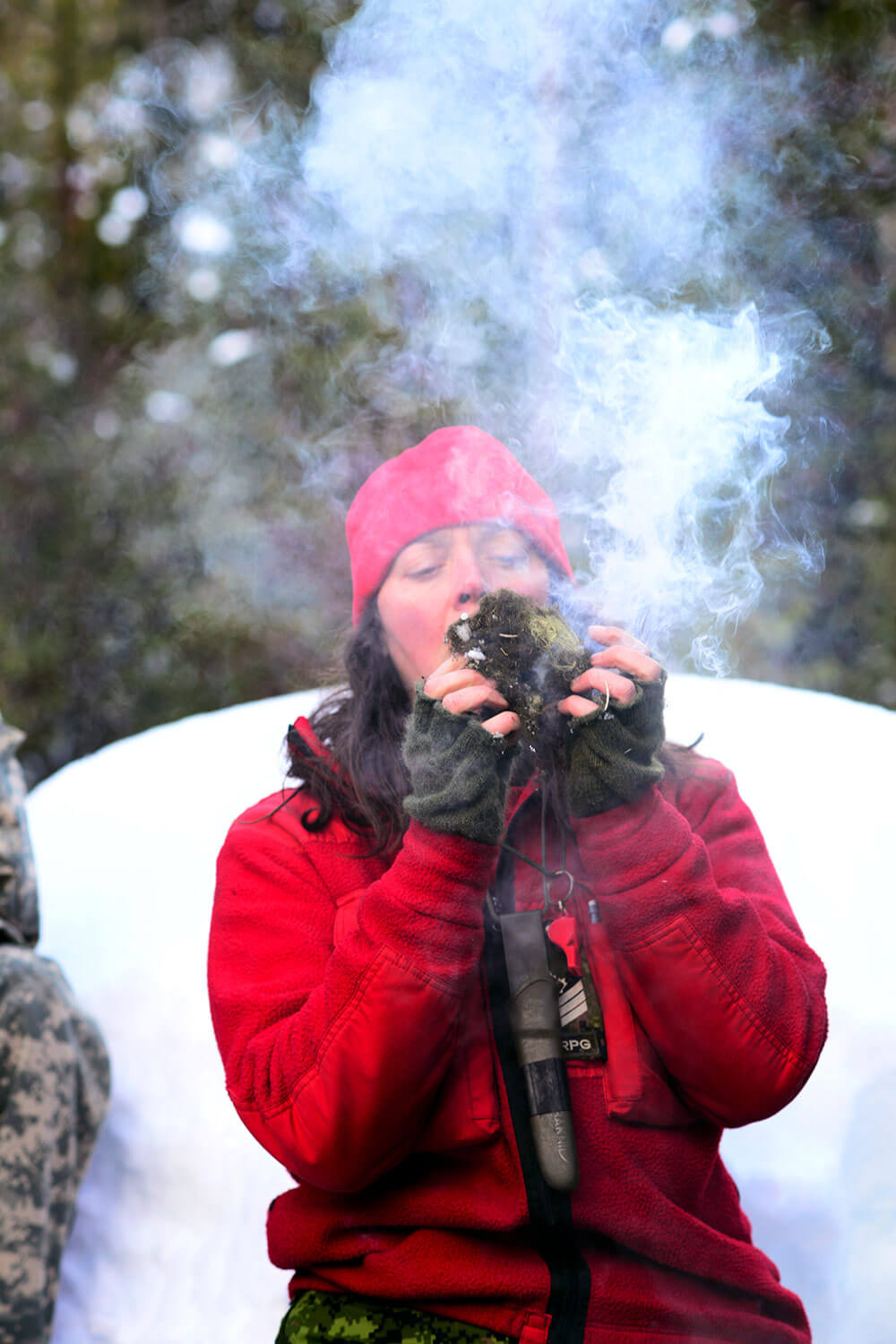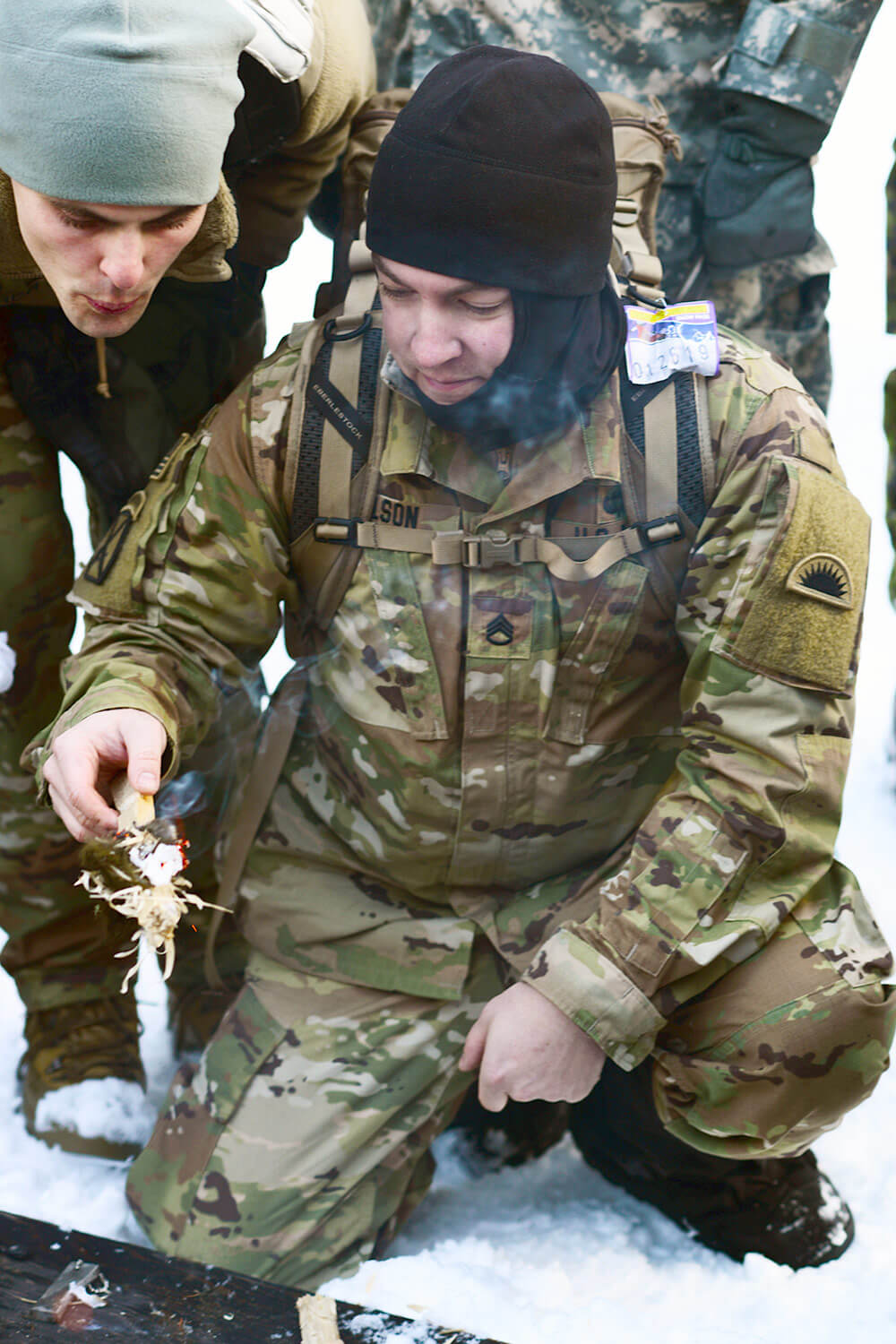Westie Avalanche Tests Oregon Soldier’s Mettle Against the Frigid Far North
The Central Command theater of operations often gets much of the country’s attention as it combats America’s enemies in Iraq, Syria and Afghanistan. The Army’s attention, however, must always remain spread across the globe to all areas of possible threat. As aggression increases in parts of the world, such as Eastern Europe along the Russian border, U.S. Soldiers must be prepared to fight not only in the arid and hot terrain of the Middle East, but also in regions where snow and cold reign supreme.

“If all we do is reference our last deployment or our last personal experience, then we don’t have much forethought to look ahead to where could we fight next,” noted LTC Kyle Akers, commander of the 2nd Battalion, 162nd Infantry Regiment, 41st Infantry Brigade Combat Team, Oregon Army National Guard. “The key point is [the same] in the desert as any type of terrain—you have to understand and fight the environment just as much as you have to understand and fight the enemy. If you don’t start there, then you’re going to have ineffective units that [are so overcome by the environment] they can’t think straight or worry about fighting an enemy.”
The type of preparedness LTC Akers spoke of is exactly what 36 Soldiers from the 2nd Battalion, 162nd Infantry Regiment, were ensuring when they went to Canada this past January to join in the Westie Avalanche exercise hosted by the Royal Westminster Regiment, 39th Canadian Brigade Group. Designed to teach troops cold-weather survival skills, Westie Avalanche doubles as an opportunity for participating Soldiers to increase North Atlantic Treaty Organization (NATO) interoperability.

The Soldiers chosen from the 41st convoyed eight hours from Camp Withycombe, Oregon, to Chilliwack, British Columbia, to join more than 90 Canadian soldiers in the yearly extreme-weather exercise.
“[Our commander’s] goals for the exercise were to enhance the working relationship we have with the Royal Westminster Regiment, to ensure safety and get all our guys there and back in one piece, and to extract maximum training value out of the event,” said 1LT John Rohrer, staff intelligence officer for the 2-162nd and the unit’s officer in charge for the Westie Avalanche exercise. “I think on all three of those fronts, it was a resounding success.”

The event took place over the course of five days, with three days in the field. At EC Manning Provincial Park, where the field portion of the exercise took place, temperatures ranged between 0 and 20 degrees Fahrenheit and three feet of snow blanketed the ground.
LTC Akers noted that infantry doctrine states that hostile weather conditions should be seen as a benefit to the infantry Soldier, because it forces them to maximize the advantages of their tactical skill and technical capability. The average Soldier may feel that part of the doctrine is easier said than done.

“To experience extreme cold up close and personal like that really gave me a whole new perspective on the immense consideration that needs to be applied to the ability to shoot, move and communicate,” said 1LT Rohrer. “When the weather gets that cold, you have [an] entirely different set of considerations. Warfare in that environment really is all about survival. Nine times out of 10, the army that survives longer wins. That’s really all arctic warfare boils down to.”
When the Oregon Soldiers arrived at the border, they were met by Canadian troops who led them to the armory in Chilliwack and then immediately began training the U.S. Soldiers on cold weather tactics including how to properly layer on cold weather clothing, how to use cold weather gear and how to treat cold weather injuries.

On day two of the exercise, the troops were in the field at EC Manning Provincial Park. They set up a base near the mountainside, but went to a nearby ski resort to access the ski trails where they practiced snowshoeing and Nordic skiing.
Nordic, or cross-country skiing, is a form of skiing where the heel of the ski boot is not attached to the ski and skiers propel themselves across the landscape using either a classic striding or skating technique. Nordic skis are generally narrower and longer than alpine or downhill skis. The length and shape of the ski, and most importantly the free-heel attachment of the boot, allows the wearer to move uphill—not just downhill as with alpine skis—easily and quickly. This is an essential function when moving an entire unit into position on a snowy mountainside.
“I’ve done some skiing before, but Nordic skiing is a lot different,” said SSG Eric Givens, a training noncommissioned officer with the 2-162nd’s Delta Company. “It was still a great experience, but definitely a different style of skiing. It was interesting to see all of us pretty much just eating snow all day once we got up to the mountainside.”

SSG Givens recalled how many of the Soldiers gave in to the need for speed on the way down the mountain. It was a chance to build camaraderie as well as gain valuable skills.
“We ended up getting down to the bottom pretty fast,” he said. “[Even if] we were on our backs—we still got down pretty fast.”
The Soldiers had to ski roughly 10 kilometers (just over six miles) to make it back to their base camp. It was there that Canadian Rangers trained both the American and Canadian troops on additional skills they would need to survive in the cold. Much like U.S. Rangers, Canadian Rangers are part of a special operations force that is called on to conduct complex, covert missions. They are also experts at surviving in the country’s most remote and inaccessible territories.

The rangers trained the multilateral group of soldiers across five stations. Those included fire starting, killing and dressing game, snare construction and placement, and two types of shelter construction.
“The thing that sticks out most in my mind is [when] we built [a shelter] called a quinzhee,” explained SSG Bradley Holbrook, a weapons squad leader with Bravo Company in the 2-162nd. “The other squad leader and I slept in there that night. It was actually more comfortable than the tent that had the heater.”
Similar in concept to an igloo, a quinzhee is a hut made from snow that has been piled then left to settle and harden in the cold. Once the snow pile solidifies, the quinzhee is carved out from the pile. A small tunnel is dug that leads to the hut and allows entrance from below the sleeping area. This unique design allows cold air to escape the shelter through the tunnel while the insulating snow walls trap warm air generated from the body heat of the occupants.

SSG Holbrook said that his experience with the emergency snow shelter was probably the best part of the entire training mission for him.
“I never experienced anything like that and I wasn’t really sure that I wasn’t preparing for a night of just absolute suck,” he said. “But I woke up the next morning and I was like, ‘Holy cow this is cool.’ I didn’t believe it was going to work, but it did. It’s probably the best night’s sleep I got there.”
The Canadian Rangers also showed the soldiers how a species of bird called a Whiskeyjack could be easily snared with a simple piece of wildlife knowledge. While it was a novel nature experience, this bit of information could be critical to Soldiers needing to survive in the northern wilderness.
“[The Whiskeyjack] will come and eat out of your hand,” said SSG Holbrook. “The Canadian Rangers were telling us that it’s good in a survival situation. They’re super easy to trap. A bunch of the guys pulled out beef jerky and [other snacks] and they were getting the birds to come down and land on them. We saw one bird and then as soon as someone held up their hand, they just came out of everywhere—15 birds landing on different guys’ hands.”
Eventually, it was time for both the Whiskeyjacks and the Soldiers of the 2-162nd to head back home. Looking back over the event, 1LT Rohrer noted the overall benefit to the unit.
“We were embedded down to the team level,” said 1LT Rohrer. “Our Soldiers were paired up with Canadian soldiers at close to a one-to-one ratio. Our guys work together with the Canadians as a team, and I think they definitely gained proficiency in cold weather operations.”
The Oregon Army National Guard Soldiers successfully completed their mission, gaining important new skills along with the approval of their commander.
“I think they did a great job of training, learning and dealing with the conditions out there,” said LTC Akers. “These are Soldiers that are meeting all the expectations that we’re asking [of] them as National Guard Soldiers.”
By Staff Writer Matthew Liptak


